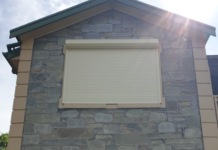Buildings often hold more than bricks and mortar—they carry decades of materials, some of which are no longer considered safe. When managing older properties, safety should always come before design or deadlines. Materials used in the past may now pose health risks, especially if disturbed during routine maintenance or major renovations. Recognising potential issues early helps avoid delays, protects people, and keeps projects running smoothly. A proactive approach is key to creating safer environments for residents, workers, and visitors. Whether planning upgrades or assessing a newly acquired space, understanding what’s inside the walls is crucial. Keep reading to explore practical ways property owners can manage safety while staying compliant.
Identifying the Right Time for an Inspection
Older buildings—especially those built before the 2000s—often contain materials that require closer attention. Renovation projects, property purchases, and demolition work are common triggers for inspections. Regular checks may be needed in commercial settings, even without planned upgrades, especially in shared or public areas. A well-timed inspection prevents potential exposure to harmful fibres and helps avoid legal complications. Whether it’s a one-off project or part of ongoing care, knowing when to act ensures both safety and compliance.
Understanding the Different Types of Surveys
Not all inspections serve the same purpose. Some are designed to assess the entire property, while others are focused on specific areas undergoing work. In certain cases, a more detailed investigation is needed before construction can begin. Understanding which type of survey suits the situation helps ensure you receive accurate, relevant information. Clear reporting also allows informed decisions about removal, containment, or routine management. Tailoring the inspection to the project keeps things efficient and on track.
Managing Risk Without Major Disruption
Safety measures don’t always mean tearing down walls. Materials can be left undisturbed in many situations as long as they’re properly identified and monitored. Where removal is necessary, experienced professionals use safe methods that limit disruption to surrounding areas. This allows schools, offices, and homes to stay operational during the process. Managing risk becomes part of responsible property care—not a burden, but a smart investment in long-term health and usability.
Staying Aligned With Current Regulations
Laws around property safety and hazardous materials are strict for good reason. Staying compliant protects the building and the people who live or work there. Landlords, business owners, and developers have responsibilities beyond basic upkeep. Keeping records up to date and ensuring qualified professionals carry out inspections helps avoid penalties and strengthens legal protection. Compliance is about doing the right thing—and being ready to prove it when needed.
Supporting Long-Term Planning and Maintenance
Survey results aren’t just for the present—they also help shape future decisions. Whether budgeting for future renovations, scheduling maintenance, or preparing a property for sale, knowing what’s inside the structure brings clarity. Detailed reports provide valuable insight for long-term planning, helping avoid surprises and maintain property value. Proactive care means fewer last-minute issues and smoother transitions from one stage of ownership to the next.
Those seeking expert property inspection and safety management support can explore Asbestos Surveys in London to ensure their next project or property decision is backed by trusted insight and care.




